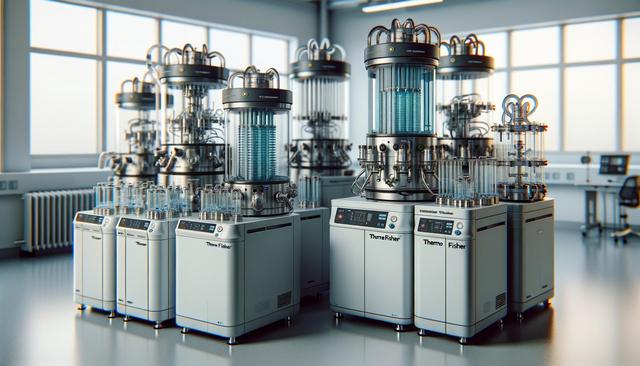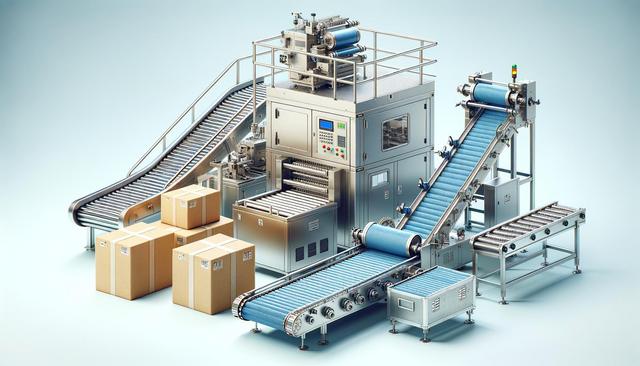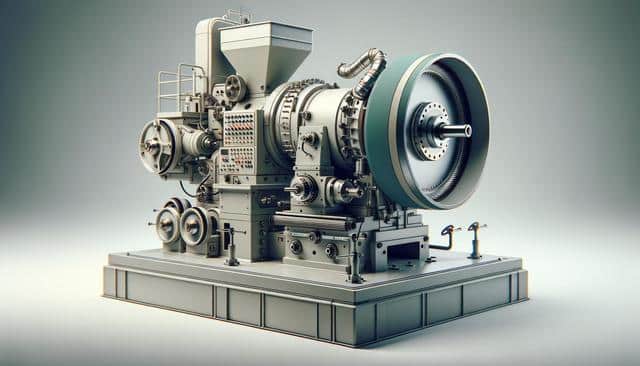
Thermo Fisher Bioreactors: Compare Models, Prices, and Laboratory Applications
Overview of Thermo Fisher Bioreactors
Thermo Fisher bioreactors are widely used in laboratories and research facilities for their reliability, precision, and flexibility across various biological and pharmaceutical applications. These systems are engineered to support cell culture, microbial fermentation, and bioprocess development at both bench and pilot scales. Whether for academic research, industrial biotechnology, or pharmaceutical production, Thermo Fisher offers a range of bioreactors suitable for diverse use cases. Their systems are designed to ensure efficient nutrient delivery, optimal aeration, and precise environmental control, making them suitable for reproducible results in sensitive biological processes.
Bioreactor systems from Thermo Fisher include both single-use and reusable options, allowing labs to choose based on their workflow needs. Single-use bioreactors are particularly popular in biopharmaceutical labs for their convenience and reduced risk of cross-contamination. On the other hand, reusable models offer long-term cost efficiency and robustness for continuous operations. Choosing the right system depends on various factors such as culture volume, cell type, and scalability requirements.
Comparison of Thermo Fisher Bioreactor Models
Thermo Fisher offers a variety of bioreactor models tailored for different laboratory environments and research needs. These include benchtop systems for small-scale testing and large-scale bioreactors for pilot and production phases. Popular models are characterized by different vessel capacities, control systems, and automation capabilities. Some models are optimized for mammalian cell culture, while others are designed for microbial fermentation or hybrid applications.
Key features to consider when comparing models include:
- Vessel volume range (from 250 mL to over 50 L)
- Control unit integration (pH, DO, temperature, agitation)
- Scalability between research and production phases
- Single-use vs. stainless steel vessel options
- Automation and data logging features
Each model line supports a specific set of requirements, making it essential to align your project needs with the technical capabilities offered by the system. Consulting product datasheets and technical specifications can provide further clarity when selecting a suitable model.
Pricing Considerations and Cost Factors
Pricing for Thermo Fisher bioreactors varies depending on model type, configuration, and included accessories. Entry-level benchtop models can start in the lower five-figure range, while larger, automated systems can exceed six figures. The cost is influenced by factors such as vessel capacity, material (single-use vs. stainless steel), integrated control systems, and software capabilities.
Labs should also consider total cost of ownership, which includes:
- Initial equipment purchase
- Consumables (e.g., sensors, tubing, bags)
- Maintenance and calibration
- Training and support services
Thermo Fisher often provides modular options, allowing users to start with a basic setup and scale up as needed. This flexibility helps laboratories manage their budgets while still accessing advanced bioprocessing technology. Additionally, some vendors offer leasing or financing options, which can be beneficial for smaller research organizations or startup labs.
Applications in Laboratory Settings
Thermo Fisher bioreactors are utilized in a wide range of laboratory applications, from early-stage research to commercial-scale bioproduction. In academic and research institutions, smaller bioreactors are often employed for studying cell growth kinetics, metabolic engineering, and gene expression. These systems are useful for optimizing culture conditions and testing new bioprocessing strategies.
In industrial labs and CDMOs (Contract Development and Manufacturing Organizations), larger-scale bioreactors are used for producing proteins, vaccines, and other biologics. Their precision and control features make them suitable for:
- Mammalian and insect cell culture
- Microbial fermentation (e.g., E. coli, yeast)
- Stem cell and regenerative medicine research
- Biopharmaceutical development
These systems are often integrated with downstream processing equipment to streamline the entire bioproduction workflow. Their versatility and integration capabilities make them a valuable asset across many scientific disciplines.
Choosing the Right Bioreactor for Your Lab
Selecting the appropriate Thermo Fisher bioreactor depends on the specific application, scale of operation, and budget constraints. Laboratories should assess their process requirements, preferred cell types, and long-term scalability goals when evaluating options. A clear understanding of the experimental scope and future growth potential will help determine whether a single-use or reusable system is more appropriate.
Factors to consider when choosing a bioreactor include:
- Type of biological system (mammalian, microbial, stem cells)
- Required level of automation and control
- Frequency of use and throughput needs
- Compatibility with existing lab infrastructure
- Support and training available from the vendor
It’s also recommended to involve cross-functional teams, including process engineers and lab technicians, in the selection process to ensure that operational needs are fully met. Regular training and updates on system usage can further enhance productivity and data accuracy.
Conclusion: Enhancing Laboratory Efficiency with the Right Bioreactor
Thermo Fisher bioreactors offer a broad range of solutions for laboratories engaged in biological research and production. By carefully comparing models, pricing, and applications, labs can select a system that aligns with their operational goals and scientific objectives. Whether working on small-scale research or scaling up to commercial production, these bioreactors provide the precision and flexibility needed for reliable results. Understanding the full scope of available options and associated costs allows laboratories to make informed decisions that support long-term success in bioprocessing applications.


